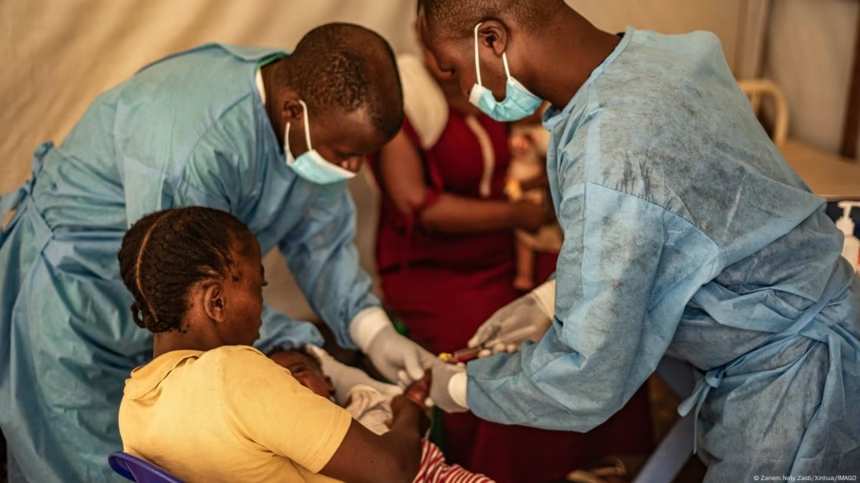Lethal Mystery Disease in Congo Claims 50+ in 48 Hours – WHO Sounds Alarm
A strange disease has hit the Democratic Republic of Congo (DRC), killing over 50 people and leaving health authorities baffled. Deadly Illness in Congo has raised serious concerns as the World Health Organization (WHO) has sounded an alarm. The disease spreads fast, with patients dying within 48 hours of showing symptoms.
Health experts fear that Deadly Illness in Congo could be a new, unidentified outbreak requiring immediate global attention. Authorities are working to determine the cause, but the rapid fatalities linked to Deadly Illness in Congo have made the situation critical.
Medical teams are on high alert as the impact of Deadly Illness in Congo worsens. WHO is closely monitoring developments, urging swift intervention. Scientists are now racing to find answers, as the mystery surrounding Deadly Illness in Congo deepens.
What Is This Mystery Illness?
The disease emerged in Congo’s remote areas, infecting more than 500 individuals as of January 2025. The victims have reportedly been affected by fever, vomiting, profuse weakness, internal bleeding, and multiple organ failure. Most strikingly, the majority of the infected succumb to death within two days, which qualifies it as one of the most lethal diseases recorded in recent years.
Early on, authorities suspected familiar diseases like Ebola or Marburg virus—both familiar hemorrhagic fever- and high-mortality causes. But preliminary tests eliminated them, leaving scientists at a loss about the origin of the disease.

How Did the Outbreak Begin?
Health authorities have identified the initial cases in three children in Boloko, a village in northwestern Congo. They reportedly had consumed a bat corpse, became very ill, and died shortly thereafter. After they died, other villagers who had contact with the infected ones also started developing symptoms, and there was a sharp increase in cases.
Bats naturally carry lethal viruses such as Ebola, Marburg, and coronaviruses. The risk of a zoonotic spillover, whereby a disease moves from animals to humans, is high.
Deadly Illness in Congo: WHO and Government Response
WHO and the Congo Ministry of Health have sent emergency response teams to impacted areas. Priorities include:-
Performing rapid tests to determine the cause.
Isolating the infected individuals to stop transmission.
Informing communities about food safety and hygiene.
Examining potential sources, such as water contamination or emerging pathogens.
But the absence of healthcare facilities in remote regions is a major challenge. The Congo has had previous experiences with Ebola, measles, and cholera outbreaks, which have often been caused by poor sanitation and poor healthcare infrastructure.
Deadly Illness in Congo: A Growing Global Health Threat
While there is no confirmation as yet, global health experts say new infectious diseases spreading from wildlife are becoming more frequent. Deforestation, climate change, and human contact with wildlife provide the perfect environment for lethal viruses to circulate. If the disease proves to be highly contagious, it may become a serious global health risk.
Deadly Illness in Congo: What Should People Do?
Avoid contact with or eating wild animals (bats, monkeys, and other carriers).
Report any abnormal diseases to health officials promptly.
Observe good hygiene, such as frequent hand washing and proper cooking of food.
Keep yourself informed about WHO and health authority alerts.

conclusion
The Congo outbreak of this unknown disease is frightening, considering its quick kill rate. While health professionals rush to determine the cause, the world waits with bated breath. Early identification and strict containment will be important in averting a larger disaster.
While we await more news, it’s a sobering reminder that emerging infectious diseases are an ongoing global threat.



